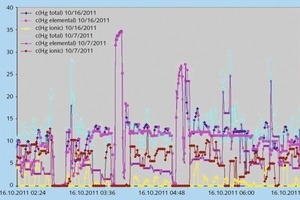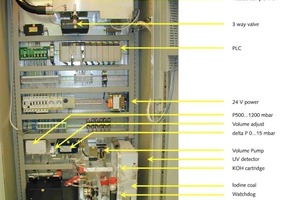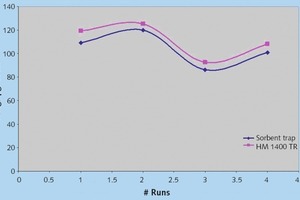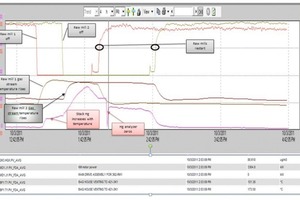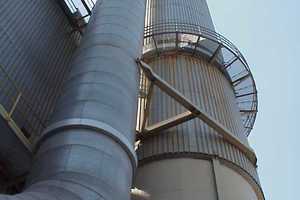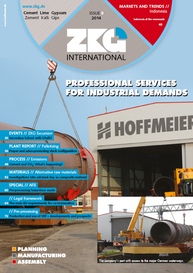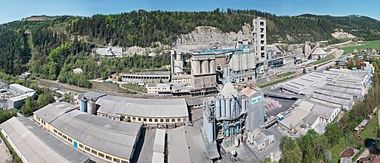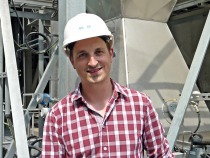Continuous mercury monitoring in cement plants
The amount of mercury in the stacks of three cement plants was monitored with a Continuous Mercury Monitor (CMM). It was necessary to modify the origin CMM, which is approved according to the EN 15267, to the US requirements (PS 12). Those modifications are mainly regarding the span and zero checks (Fig. 1). The European regulation asks for frequent span checks using an aqueous HgCl2 solution. Frequently this terms means within a maintenance cycle of the CMM. The typical maintenance cycle of a CMM is 3 months. The US requirement (PS12) prompts a daily span check on an elemental mercury (Hg0), a weekly span check on a HgCl2 basis and a quarterly linearity check using Hg0 (Fig. 2). The source for elemental mercury is a permeation tube heated on an 80°C level. The source for the HgCl2 is a vaporizer which is fed with a defined amount of HgCl2 and instrument air. This vaporizer is either screwed into the sample probe or instead a heated umbilical equipped with a dual, separated PTFE line is used as a vaporizer itself. The vaporizing temperature is 180°C. Frequent bypassing of the conversion unit allows the CMM to speciate between Hg0, Hgtotal and Hgionic.
None of the cement plants in the test were using secondary fuel as a thermal energy source. More than 90 % of the measured mercury came out of the raw material which is milled in the raw mill to defined fractions (Fig. 3). Cyclones separate the produced fractions by particle size. The raw material with the right particle size is delivered pneumatically to the kiln. The rest runs through the mill again until the particle size is appropriate for the kiln. This raw mill needs to be maintained every 7-10 days for approximately one day.
By regulation the allowed mercury level in the stack as a yearly average is 11 µg/m3. The results show a significant difference in the species and in the concentration level of mercury when the mill is in operation or not. When the raw mill is running more than 95 % of the mercury in the stack is Hg0 at a 10 µg/m3 level or lower. When the raw mill is switched off most of the mercury is ionic at a level higher than 100 µg/m3.
//www.durag.com" target="_blank" >www.durag.com:www.durag.com

